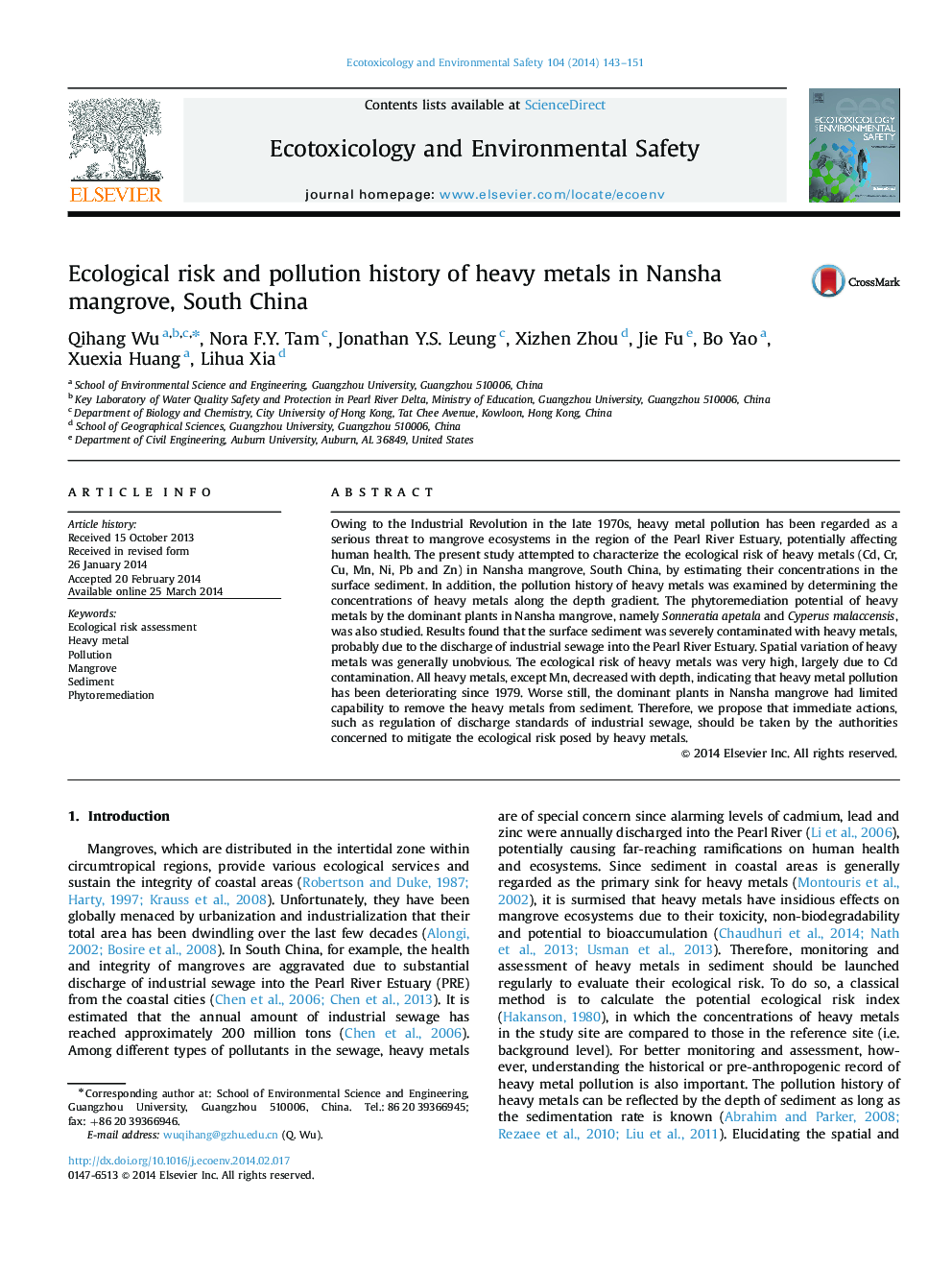| Article ID | Journal | Published Year | Pages | File Type |
|---|---|---|---|---|
| 4420174 | Ecotoxicology and Environmental Safety | 2014 | 9 Pages |
•Ecological risk and pollution history of heavy metals in sediment are examined.•Phytoremediation potential of the dominant plants in Nansha mangrove is studied.•Heavy metal pollution in Nansha mangrove is serious and has been deteriorating since 1977.•Dominant plants have low phytoremediation potential for heavy metals.•Ecological risk in Nansha mangrove is high and immediate actions are recommended.
Owing to the Industrial Revolution in the late 1970s, heavy metal pollution has been regarded as a serious threat to mangrove ecosystems in the region of the Pearl River Estuary, potentially affecting human health. The present study attempted to characterize the ecological risk of heavy metals (Cd, Cr, Cu, Mn, Ni, Pb and Zn) in Nansha mangrove, South China, by estimating their concentrations in the surface sediment. In addition, the pollution history of heavy metals was examined by determining the concentrations of heavy metals along the depth gradient. The phytoremediation potential of heavy metals by the dominant plants in Nansha mangrove, namely Sonneratia apetala and Cyperus malaccensis, was also studied. Results found that the surface sediment was severely contaminated with heavy metals, probably due to the discharge of industrial sewage into the Pearl River Estuary. Spatial variation of heavy metals was generally unobvious. The ecological risk of heavy metals was very high, largely due to Cd contamination. All heavy metals, except Mn, decreased with depth, indicating that heavy metal pollution has been deteriorating since 1979. Worse still, the dominant plants in Nansha mangrove had limited capability to remove the heavy metals from sediment. Therefore, we propose that immediate actions, such as regulation of discharge standards of industrial sewage, should be taken by the authorities concerned to mitigate the ecological risk posed by heavy metals.
